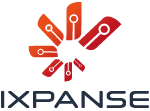What Is Logging? How to Implement It?
In an IT system or application, thousands of events occur every second: a user signs in, data is fetched from a database, a server is rebooted, or a firewall blocks a threat. All these actions turn into records often called the system’s “digital footprints.” These records are called Logs.
In modern, complex IT infrastructures, maintaining transparency and control is vital. Logging is the mechanism that precisely documents when, where, and by whom an event occurred. The only way to understand “what happened” in a system accurately and in time is through log records. Logs detect security breaches, prove regulatory compliance, reveal the root cause of performance issues, and serve as legal/digital evidence during incident response (IR). A Security Operations Center (SOC) and modern analytics approaches are essentially “flying blind” without logs.
Core Objectives of Logging:
- Visibility: Understand the real-time state of systems and applications.
- Security: Detect cyber threats and abnormal behavior.
- Compliance: Provide an audit trail aligned with legal and industry regulations.
Key Concepts – What Is a Log and Why Does It Matter?
Definition and Components of a Log Record
A log record is a chronological and structured record of events occurring in a system. A well-formed log entry contains standard components that let us quickly understand the context of the event:
- Timestamp: Shows exactly when the event happened (synchronized via NTP, UTC format preferred).
- Source (Source/IP): Which server, application, or network device the event came from.
- Event ID / Process ID: A unique code indicating the event type and process (e.g., sign-in, file deletion, process number).
- Level: The severity of the event (Error, Warning, Information, Debug, Critical).
- Correlation ID: A unique identifier used to link chained events occurring across multiple systems.
- Message: Free text or structured data describing the event content.
Log Types: What Do We Collect and From Where?
The logs an organization collects vary by infrastructure layer. Critical log types include:
- System (OS) Logs: Linux Syslog (e.g., contents of
/var/log), Windows Event Log. Covers server startup, user authorization, hardware and system service status. - Application Logs: Records business logic, errors/exceptions, API calls, and user interactions.
- Database Logs: Queries, schema changes, slow query detection, and especially access control records.
- Security Logs: Antivirus (AV), Endpoint Detection & Response (EDR/XDR) detections, quarantines, and security policy violations.
- Identity and Access Logs (IAM): Active Directory (AD)/LDAP, Single Sign-On (SSO), Multi-Factor Authentication (MFA), and failed/suspicious sign-in attempts.
- Network Logs: Firewall (FW), IDS/IPS, Web Application Firewall (WAF), VPN, DNS, and proxy traffic records.
- Cloud and SaaS Logs: AWS CloudTrail/Config, Azure Activity/Sentinel data, GCP Audit; M365/Google Workspace audit logs.
- Audit Logs: Administrative actions, change management in critical systems, and configuration history.
Logging Standards and Formats
To keep logs consistent and analytics-ready, standardized protocols and formats should be used.
- Syslog Protocol (RFC 5424): The foundational protocol used by network devices and Linux/Unix operating systems.
- JSON/NDJSON: Machine-readable, schema-friendly, and highly suitable for analytics—commonly preferred by cloud and modern applications.
- CEF/LEEF: Standard formats with predefined fields designed for SIM/SIEM integrations.
Best practice: Normalize logs from all sources using common field names for analysis and correlation, and store numeric, date, and text types consistently.
How to Implement Effective Logging (Architecture & Practice)
Effective logging is not just about collecting records; it’s about managing, analyzing, and deriving meaning from them.
Centralized Log Management and SIM/SIEM
Modern IT estates generate logs from hundreds or even thousands of sources. Instead of managing scattered logs, centralizing them is essential.
- Need: Send all logs to a central repository (Log Aggregation). This simplifies correlation across systems and enables efficient search.
- What Is SIM/SIEM? The most advanced form of centralized log management is SIM/SIEM (Security Information and Event Management). SIEM ingests log data in real time, learns normal vs. abnormal patterns, and detects hidden threats through cross-correlation.
- Benefits of SIM/SIEM: Real-time analytics, automated detection of complex threats (e.g., the same user logging in from different geographies simultaneously), instant alerting for rapid response, and reporting for regulatory audits.
Log Architecture: Reference Design
An ideal logging architecture includes a chain of components from the point a log is produced to the point it’s analyzed:
Source → Agent/shipper → Collector/queue → Enrichment/normalization → Storage → SIEM/Analytics → Alert/Incident
- Agent/Shipper: A lightweight component close to the source (server/endpoint), such as a file harvester. It reads logs and forwards them to the collector.
- Queuing (Message Bus): A buffering layer between agent and collector. Provides resilience to spikes, retries, and flow control.
- Enrichment: Adding contextual data to logs—e.g., geolocation, threat intelligence tags (malicious IP/domain), or Asset and User Inventory—enhances analytical value.
- Storage Tiers: Split logs by usage frequency and legal retention:
- Hot: Recent hours/days; low-latency access for high query performance.
- Warm: Operational window (e.g., last 90 days); moderately frequent access.
- Cold/Archive: Compliance retention (long term); low-cost object storage (WORM) or tape.
Core Requirements:
- Time Synchronization with NTP: Critical for accurate cross-system timelines.
- Encrypted Transport (TLS): Secure transmission of logs over the network.
- Load Balancing and Scalability: Handle high-volume log flows reliably.
Step-by-Step Logging Implementation
An effective logging program is more than a technical setup; it requires an enterprise-wide policy.
- Policy and Scope: Formally define “which fields from which sources, how frequently, and for what purpose” will be collected across the organization. Start with a risk-based scope (business-critical systems first).
- Fields and Data Minimization: Apply the least necessary data principle in line with GDPR/KVKK. Mask or anonymize PII and sensitive data.
- Normalization and Enrichment: Map collected logs to a common schema and strengthen context using asset inventory, user identity, and threat intelligence (IOCs).
- Monitoring, Alerting, and Playbooks: Define SIEM rules, thresholds, and apply UEBA (User and Entity Behavior Analytics). Prepare runbooks for triage and SOAR (Security Orchestration, Automation, and Response) automation.
Log Retention and Protection
The integrity and availability of logs must be preserved for legal and forensic processes.
- Immutability of Logs: Ensure logs cannot be altered or deleted after being written by applying WORM (Write Once Read Many) or cloud immutability policies. This protects evidentiary value for forensics. Use signing/hashing to check for duplication and integrity.
- Retention Periods: Set policies based on business and compliance needs (e.g., 90/180/365+ days) and move logs to cost-optimized archive tiers.
- Access Control: Restrict access to logs via RBAC (Role-Based Access Control) and dedicated admin accounts.
Why Log Records Are Vital for Businesses
Cybersecurity and Forensics
Logs play both preventive and corrective roles against security incidents.
- Anomaly Detection: Logs flag threats before damage occurs by identifying anomalies such as rapid-fire failed logins (brute force), access outside normal business hours, or high-volume data transfers.
- Post-Incident Analysis: After a breach, logs are indispensable for full forensic analysis. They reveal the root cause (which vulnerability was exploited), how the system was compromised, how far it spread, and whether sensitive data was accessed.
Performance and Operational Efficiency
Logs also provide critical insights for healthy, efficient operations.
- System Health Monitoring: Continuously records performance metrics like application latency, database query times, memory usage, and server load. Logs enable proactive detection of issues before users notice them.
- Troubleshooting: Unexpected production errors or customer complaints can be traced down to the exact code line within seconds by analyzing logs—dramatically reducing MTTR (Mean Time to Resolution).
Regulatory Compliance
Many regulations require organizations to keep detailed and reliable audit trails.
- GDPR and KVKK Compliance: For systems accessing personal data, it is legally required to record who accessed which data, when, and for what purpose. Logs provide this proof. Purpose limitation and data minimization must be prioritized in logging policies.
- ISO 27001: The Information Security Management System (ISMS) standard mandates proving logging and monitoring controls, incident management, and change/access control via log records.
- PCI DSS: In cardholder data environments, logging access and administrative actions on critical systems, along with time synchronization and log integrity (immutability), is mandatory.
Cost Optimization
Due to large data volumes, logging costs can grow quickly. Cost-reduction strategies include:
- Tiering: Use Hot/Warm/Cold storage and lifecycle policies to move logs into cost-effective archives.
- Compression/Dedup: Improve storage efficiency through data deduplication and compression.
- Indexing and Query Strategies: Index only frequently used fields and leverage smart query patterns to reduce analysis costs.
- Filtering and Sampling: Reduce unnecessary ingestion by filtering noise at the source (e.g., constantly successful connection logs) or by sampling.
Log Quality KPIs and Maturity Checklist
Use key performance indicators (KPIs) and a checklist to measure the effectiveness of your logging program:
Key KPIs:
- Log Ingestion Success Rate: Percentage of logs successfully transferred from source to collector.
- Data Loss/Corrupt Record Rate: Percentage of logs lost/corrupted during transfer or storage.
- MTTD (Mean Time to Detect): Average time to detect a threat.
- MTTR (Mean Time to Respond): Average time to respond to and resolve an incident.
- Coverage Rate (% of Sources): Percentage of business-critical systems being logged.
Common Mistakes:
- No NTP: Without time synchronization, it’s impossible to build accurate timelines across events.
- Inconsistent Fields: Missing or free-form fields make automated analysis impractical.
- PII Leakage: Logging personal data unnecessarily, violating GDPR/KVKK.
- No Log Integrity: Logs can be deleted or modified.
- “Alert on Everything”: Alert fatigue causes critical events to be missed.
In Short
For a modern business, logging is not just an IT task—it is the cornerstone of enterprise risk management, business continuity, and regulatory compliance. The first step to securing your digital assets and ensuring operational efficiency is gaining visibility.
A well-designed logging architecture catches attacks earlier, answers compliance requirements confidently, and accelerates operations. Investing in a centralized log collection and analytics platform (especially SIM/SIEM systems) is a critical step to prepare your organization for future cyber threats and operational challenges.
As Ixpanse Teknoloji, we provide the end-to-end chain of architecture design → deployment → 24/7 SOC monitoring → compliance reporting under one roof. Contact us for a logging and monitoring roadmap tailored to your organization.




